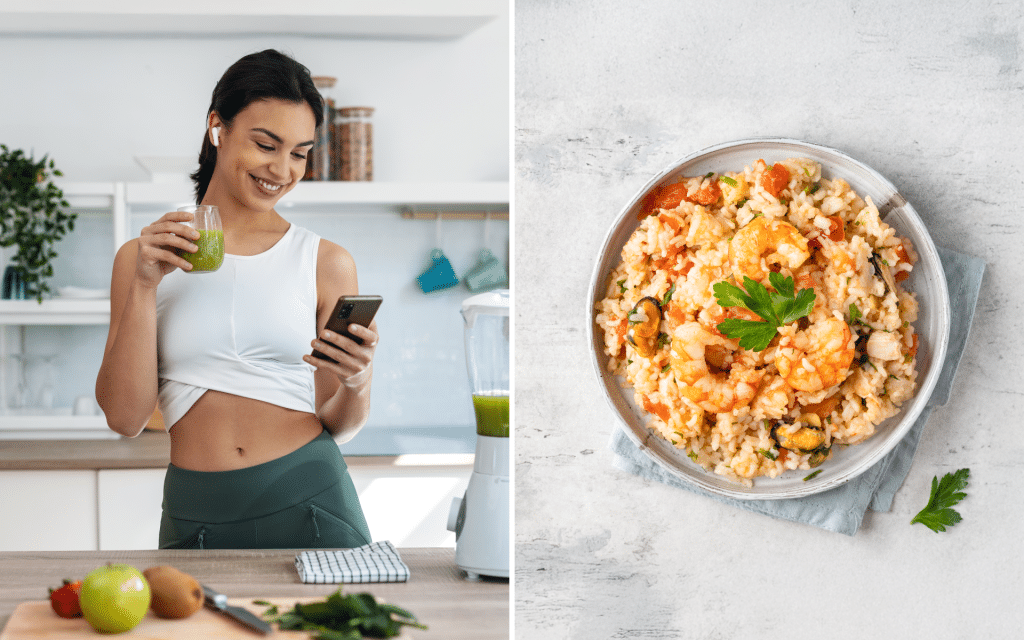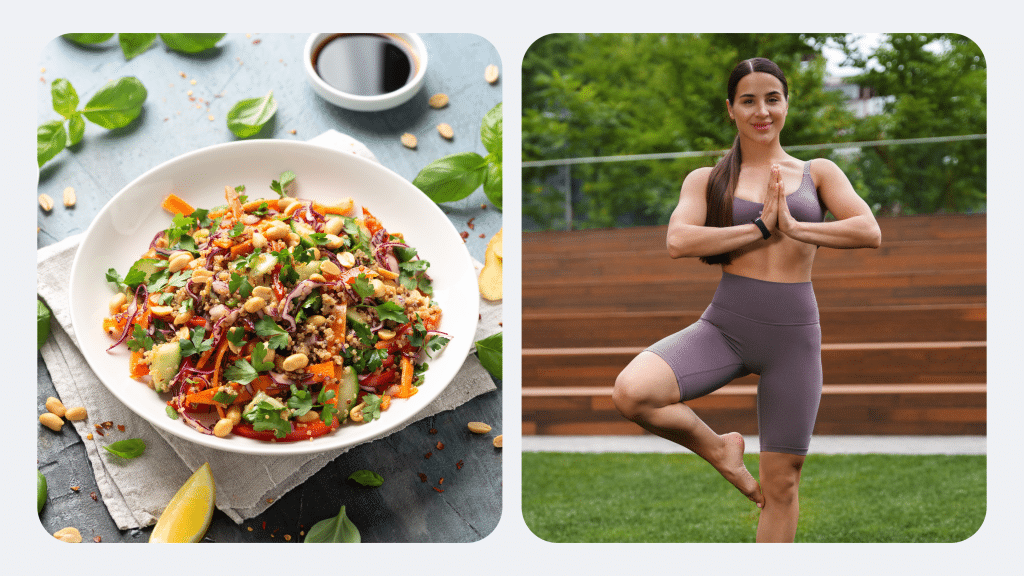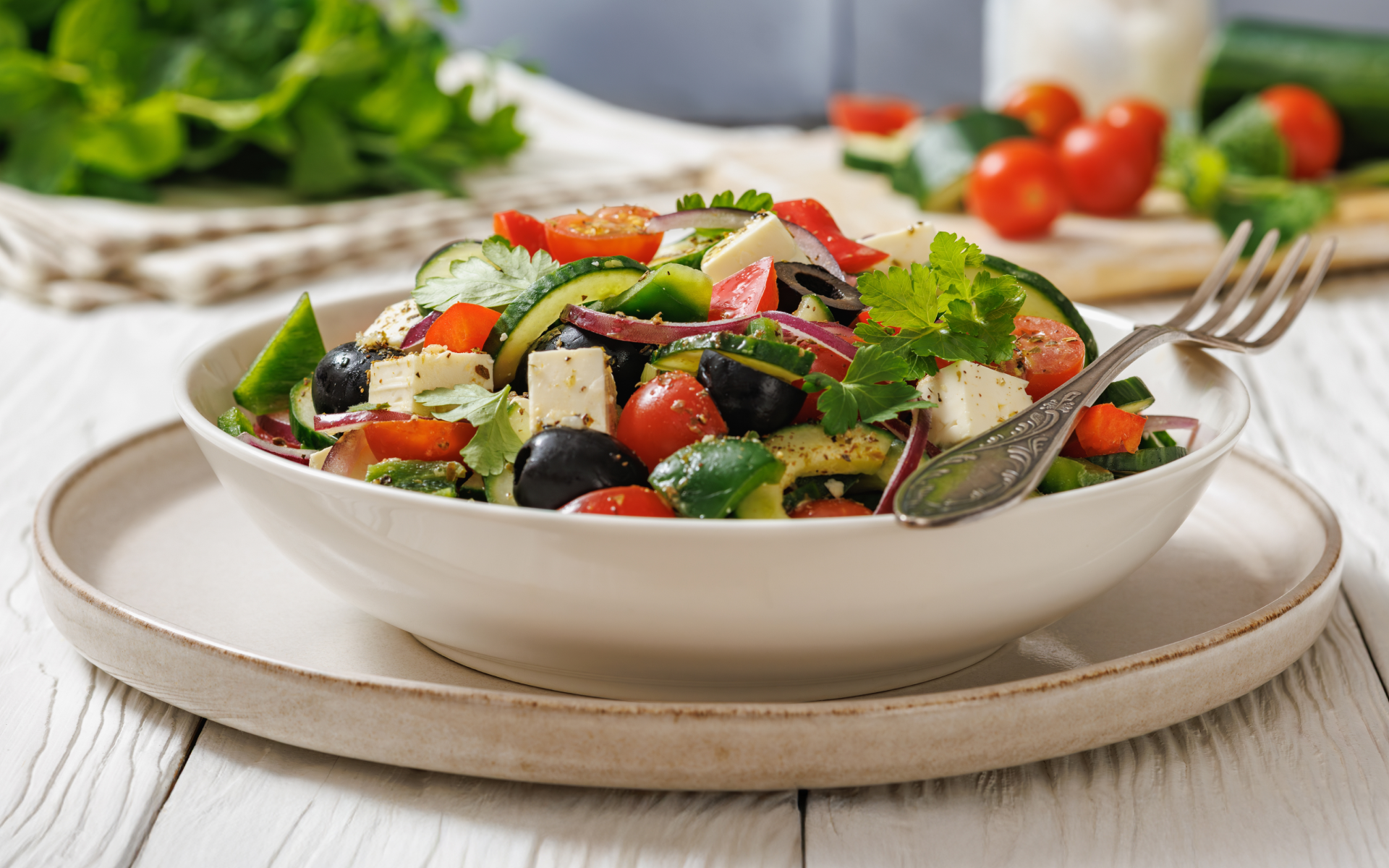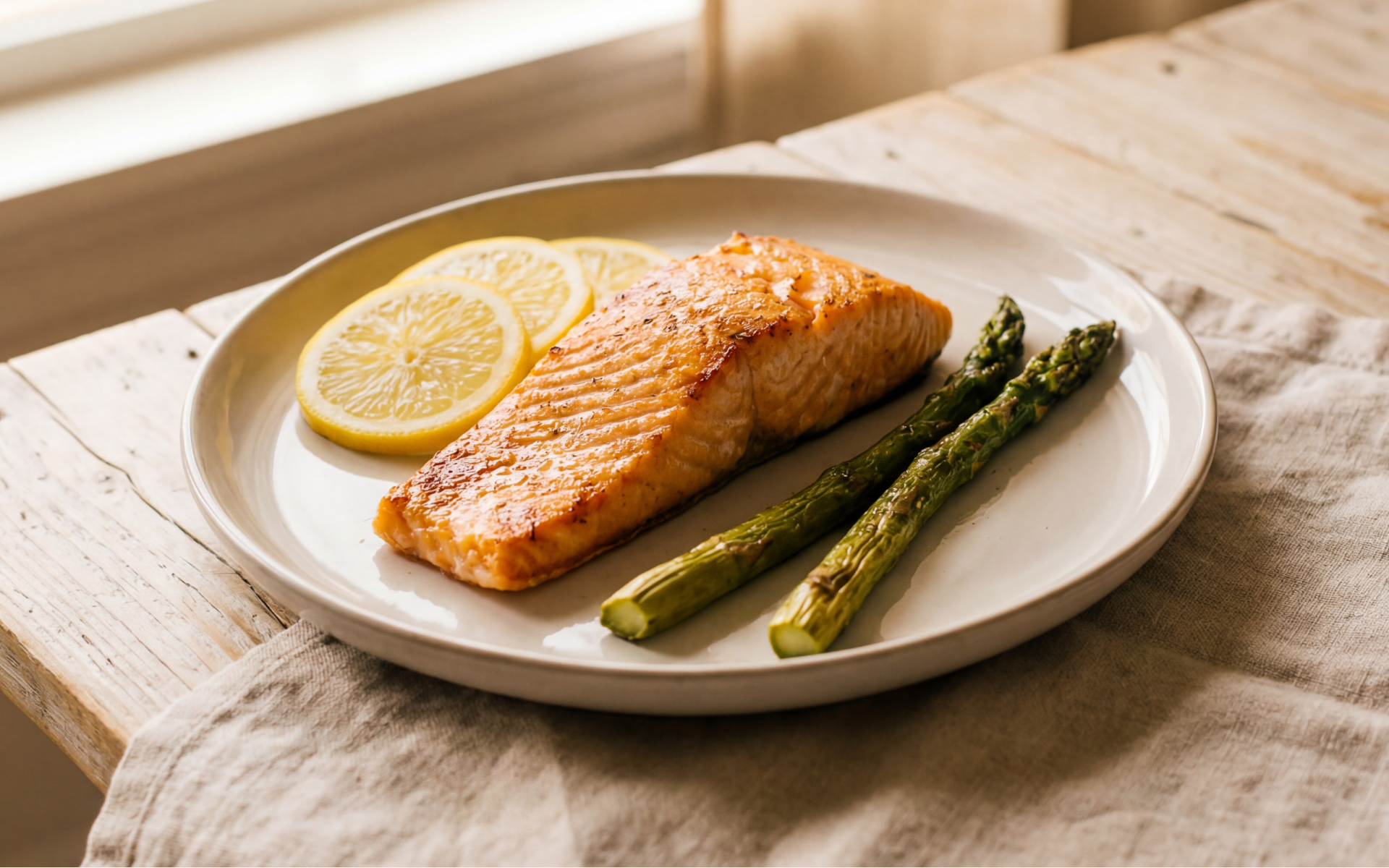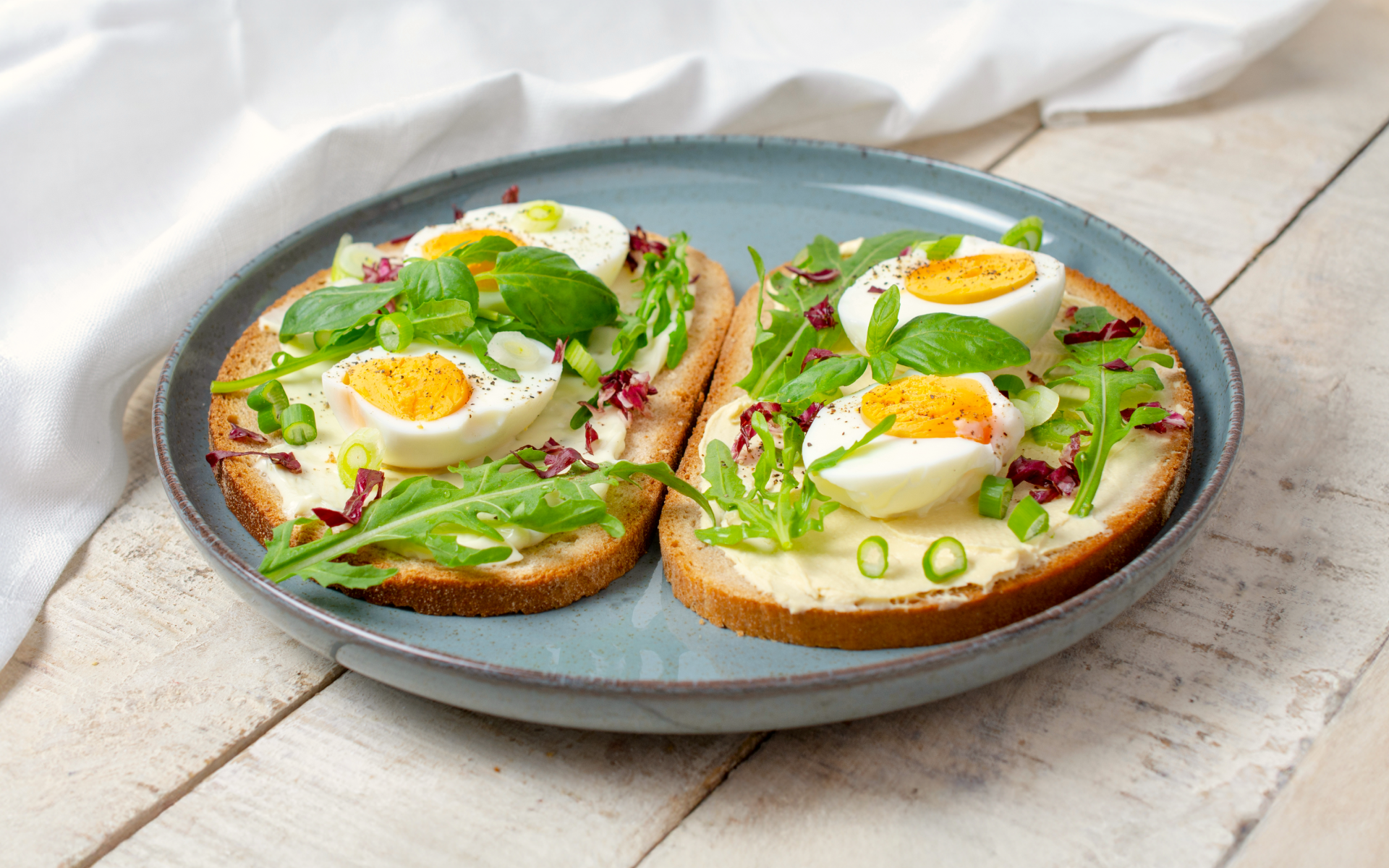In recent years, Indian cuisine has gained relevance as an option that could help those who are seeking to lose weight. This flavorful and traditional cuisine may offer significant health benefits, including the potential to achieve a healthy weight.
Today, many traditional foods from Indian cooking are being reevaluated for their valuable nutritional properties and their potential to enhance overall well-being. In this blog post, we invite you to explore with us some of these ingredients, together with their specific benefits and how they could help you on your weight loss journey.
Remember that while diet can be a powerful tool, success in weight loss is often dependent on a comprehensive approach that includes physical activity and other healthy habits. Join us in discovering how Indian cuisine could be a beneficial addition to your health and wellness strategy!
Is Indian Cuisine Good for Weight Loss?
When it comes to losing weight, Indian cuisine could be a great ally. Here’s why:
First of all, Indian cuisine could be considered healthy as it’s packed with plant-based foods, such as legumes, vegetables, and whole grains, which could be excellent allies on your weight loss journey. These ingredients are naturally high in fiber, which could help you feel fuller more quickly and potentially reduce those snack cravings.
In addition, increasing your fiber intake through these foods could provide multiple benefits, such as improving digestion, helping regulate blood sugar levels, and potentially reducing cholesterol. So, by choosing fiber-rich Indian dishes, you’re benefiting in terms of satisfaction and weight control and making positive choices for your long-term health (1) (2).
Let’s also talk about the spices. Indian cuisine uses a wide range of seasonings that add great flavor and may also offer potential health benefits. We’ll soon dive deeper into these ingredients and share how they could work wonders in your diet.
And let’s not forget the cooking methods that are used for many Indian dishes. Many recipes employ healthier techniques, such as steaming and baking, instead of frying.
So, to answer the question, yes, Indian cuisine could be very helpful in your attempts to lose weight. It has various elements that could help you achieve your goals. Remember that weight loss involves many factors, such as physical activity, age, and genetics, but incorporating Indian cuisine into your diet could be an effective way to move forward (3).
What Indian Foods Help Burn Fat?
As previously mentioned, the Indian diet is recognized for its emphasis on fresh, plant-based foods and spices, which makes it a healthy option. Unlike many Western diets that are heavily reliant on animal products and processed foods, the Indian diet prioritizes a high intake of vegetables, legumes, and whole grains. These foods are rich in fiber and nutrients, which promote satiety and could help regulate appetite (4).
In addition, the spices used in Indian cuisine add flavor to dishes and possess beneficial properties that could positively impact overall health and support weight management.
BetterMe: Health Coaching app helps you achieve your body goals with ease and efficiency by helping to choose proper meal plans and effective workouts. Start using our app and you will see good results in a short time.
Below, we’ll explore five ingredients that are commonly used in Indian cuisine and are particularly valuable for health and may contribute to maintaining a healthy weight:
- Turmeric: Turmeric contains curcumin, a compound with powerful anti-inflammatory and antioxidant properties. These effects could be beneficial for overall health by reducing inflammation and oxidative stress, both of which can contribute to the development of chronic diseases (5).
- Ginger: This spicy root is known for its positive effects on digestion and its potential to increase thermogenesis, a process that could contribute to calorie burning. Ginger could be a valuable ally in a holistic approach to wellness (6).
- Cumin: Cumin is a common spice in Indian cooking and has been studied for its health benefits, particularly for digestive health. It may enhance nutrient bioavailability and help regulate metabolism, which makes it a useful component in a balanced diet approach (7).
- Cinnamon: This spice adds a sweet and warm flavor to meals and has been suggested to help balance blood sugar levels and increase insulin sensitivity. These effects could have a positive impact on metabolic health and support weight management in the context of a healthy balanced diet (8).
- Indian Tea (Chai): Made with a blend of spices such as ginger, cardamom, and cinnamon, chai is delicious and packed with antioxidants. The regular consumption of tea could enhance overall well-being and, due to its properties, may support healthy eating practices (9).
Integrating these foods into your daily diet, together with a focus on whole grains, legumes, and vegetables, maximizes health benefits and could help you optimize fat loss. Adopting a comprehensive approach that includes regular exercise and healthy lifestyle habits is essential for achieving and maintaining overall well-being.
Read more: Low-Carb High-Protein Meal Plan to Keep You Full and Focused
How to Balance Carbs and Protein on the Indian Diet?
While the Indian diet has many benefits, it can often be high in carbohydrates (even if they are of good quality). Therefore, it’s important to be aware of this.
Balancing carbohydrates and proteins in an Indian diet is essential for maintaining a healthy lifestyle, managing weight, and ensuring proper nutrition. Here are some tips on how to achieve this:
Choose Healthy Protein Sources
- Include legumes and dairy: In addition to lentils, consider chickpeas, black beans, and dairy products such as yogurt (especially Greek yogurt) and paneer (Indian cottage cheese), which are rich in protein.
- If you consume meat, opt for lean options such as chicken or fish.
Select Sources of Complex Carbohydrates
- Opt for whole grains: Choose brown rice, quinoa, millet, or buckwheat instead of white rice or white bread products.
- Incorporate legumes: Peas, lentils, and beans are excellent sources of complex carbohydrates and fiber, in addition to protein.
Control Portion Sizes
- Appropriate portions: Maintain balanced portions of carbohydrates and proteins in each meal. Using the plate method could be a good idea:
- 50% vegetables: Fill half your plate with a variety of colorful vegetables that are low in calories and high in fiber.
- 25-30% proteins: Include a serving of legumes or lean meat.
- 20-25% carbohydrates: Serve an adequate portion of quality carbohydrates.
And don’t forget about healthy fats! You can add healthy fats in a variety of ways: drizzle olive oil over vegetables, include slices of avocado, or sprinkle nuts and seeds in your salads.
At this point, it can be helpful to consult a registered dietitian as one approach may not be suitable for everyone. They could tailor recommendations based on your specific needs and health goals, which will ensure you follow an appropriate and effective plan.
Combine Foods
- Mix food groups: Combining legumes with grains (such as lentils with quinoa) could enhance the amino acid profile and provide a balanced combination of carbohydrates and proteins.
Avoid Ultra-Processed Foods
Choosing quality foods is just the beginning. It’s important to reduce your intake of added sugars, refined carbohydrates, and processed meats. Although the latter may seem convenient, they often contain preservatives and high levels of sodium.
By opting for minimally processed and nutritious choices such as lean proteins and whole grains, you could improve your health and overall well-being. It’s important to stay informed and be mindful of what you consume.
What’s a Good Indian Dinner for Weight Loss?
A good Indian dinner for weight loss should be nutrient-rich, low in calories, and use spices that add flavor and help with digestion. Below is a delicious and healthy option:
Dal Tadka with Spinach and Quinoa
Dal Tadka is a traditional Indian dish that’s made from legumes, typically lentils, which are cooked until tender and then seasoned with aromatic spices. For this dinner, a nutrient-packed Dal Tadka is prepared that is enhanced with fresh spinach, which boosts its nutritional value. Instead of rice, the dish is served with quinoa, a protein-rich pseudocereal with a low glycemic index, which makes it an ideal choice for weight management (11).
Preparation:
- Cooking the dal: Cook the lentils in water with turmeric and a little salt until they are tender. You can use a pressure cooker to reduce the cooking time.
- Making the tadka: In a pan, heat a little oil or ghee (clarified butter) and add mustard seeds, cumin, and asafoetida. When they start to sizzle, add chopped onion, garlic, and ginger. Sauté until golden, then incorporate chopped tomatoes and cook until they break down. You can add more vegetables such as bell peppers or carrots to increase the fiber and nutrient content.
- Mixing: Add the cooked lentils to the tadka along with chopped fresh spinach. Simmer to integrate the flavors. Adjust the salt and add a squeeze of lemon juice to enhance the flavor.
- Cooking the quinoa: Cook the quinoa in water (1:2 ratio) until the grains are tender and the water is absorbed.
Benefits:
- Nutritious: High in protein, fiber, and vitamins.
- Appetite Control: Fiber and protein help keep you feeling full longer, which may prevent later cravings.
- Digestive Spices: Spices such as cumin and ginger add flavor and are known for their digestive properties, potentially helping the body process food better.
This dish is delicious and nutritious, in addition to being excellent for supporting your weight loss goals and fitting well within vegetarian Indian diets.
Read more: Easy 7-Day High Protein Low Carb Diet Meal Plan
What’s a Sample of a 7-Day Indian Diet Plan for Weight Loss?
It may be a lot of information, we know, but here we bring you an example of a 7-day Indian diet plan for weight loss. This plan combines all food groups in a balanced way, using typical ingredients from Indian cuisine (10):
7-Day Indian Meal Plan for Weight Loss
Day 1
- Breakfast: Idli with sambar (steamed rice cake with lentil soup) and Greek yogurt with fruit
- Lunch: Tandoori chicken (marinated and grilled chicken) with basmati rice and a salad of tomato, onion, and cilantro
- Dinner: Palak paneer (spinach with paneer cheese) with whole wheat naan and steamed broccoli
Day 2
- Breakfast: Dhokla (steamed chickpea flour cake) with chutney and Greek yogurt and baby carrots
- Lunch: Chana masala (spiced chickpeas) with brown rice and kale salad
- Dinner: Fish curry with sautéed vegetables (such as bell peppers, zucchini, and green beans) and paneer cheese
When it comes to weight loss, progress is made by inches, not miles, so it’s much harder to track and a lot easier to give up. The BetterMe: Health Coaching app is your personal trainer, nutritionist, and support system all in one. Start using our app to stay on track and hold yourself accountable!
Day 3
- Breakfast: Aloo paratha (potato-stuffed flatbread) with Greek yogurt and fresh spinach
- Lunch: Chicken biryani (spiced rice with chicken) with beetroot and grated carrot salad
- Dinner: Dal makhani (creamy black lentils) with chapati and a side of steamed peas and carrots
Day 4
- Breakfast: Spinach smoothie (spinach shake) with Greek yogurt, banana, and a tablespoon of chia seeds
- Lunch: Butter chicken (chicken in buttery sauce) with basmati rice and a side of sautéed broccoli
- Dinner: Baingan bharta (mashed roasted eggplant) with a side of grilled paneer and arugula salad
Day 5
- Breakfast: Uttapam (rice pancake) with tomato sauce and a handful of nuts
- Lunch: Tofu curry (tofu cooked in curry sauce) with quinoa and steamed broccoli
- Dinner: Rogan josh (lamb curry) with naan and a side of fresh cucumber and mint salad
Day 6
- Breakfast: Chai (Indian tea) with a paneer sandwich and roasted vegetables
- Lunch: Samosas (stuffed pastries) with lentils, mint chutney, and coleslaw
- Dinner: Khichdi (a mix of rice and lentils) with Greek yogurt, pickles, and a serving of steamed asparagus
Day 7
- Breakfast: Mango smoothie (mango shake) with almond milk and a handful of almonds
- Lunch: Vegetable pulao (rice mixed with various vegetables) and chicken
- Dinner: Vegetable tikka masala (vegetables in tikka sauce) with naan and Greek yogurt as a side
Roti is a whole grain bread option that, compared to refined white bread, could be a useful replacement for those who are looking to lose weight, as it’s lower in calories and high in fiber, which helps maintain fullness for longer. However, it’s important to remember that no single food defines weight loss – maintaining a balanced and healthy diet is crucial. In addition, it’s recommended to consume it in moderation and choose whole-grain versions (12). The healthiest curry will depend on its ingredients, but generally, curries that are made with plenty of vegetables and legumes, such as vegetable curry or lentil curry, are excellent options. These curries tend to be nutrient-dense and low in calories. Naan may not be the best option for weight loss, as it often contains more calories and carbohydrates than roti due to being made with white flour and sometimes containing butter. However, it’s important to remember that no single food defines weight loss – it may be better to opt for roti or whole-grain bread most of the time, but all foods can fit within a balanced dietary context (12). As with all types of diets, the unhealthiest Indian foods could include fried items such as samosas, bhajis, and paneer pakoras, as well as sugary desserts such as jalebi. In addition, fast and processed foods, such as pre-packaged biryani or packaged snacks, are also considered less healthy. These foods are typically high in fats, sugars, and calories, which could affect your weight loss efforts.Frequently Asked Questions
Is roti good for weight loss?
Which curry is the healthiest?
Is naan healthy for weight loss?
What is the unhealthiest Indian food?
The Bottom Line
In recent years, Indian cuisine has emerged as a popular choice for those who are looking to lose weight, offering a rich tapestry of flavors and textures that also come with significant health benefits. This culinary tradition emphasizes the use of legumes, vegetables, whole grains, and a variety of spices, all of which are integral to creating wholesome meals. Foods commonly found in Indian cuisine are generally high in fiber, which helps promote feelings of fullness and regulate appetite, which makes weight management easier.
Furthermore, many traditional Indian dishes are prepared using healthier cooking techniques, such as steaming and baking, rather than frying, which enhances their nutritional value.
While a balanced diet plays a crucial role in weight management, achieving and maintaining weight loss success often requires a comprehensive approach that includes regular physical activity and healthier lifestyle habits.
By exploring the vast array of Indian dishes, you could uncover a variety of options that are aligned with your weight loss goals. Embracing the principles of Indian cooking could lead to a more balanced and rewarding dietary experience, supporting weight management and overall well-being.
DISCLAIMER:
This article is intended for general informational purposes only and does not serve to address individual circumstances. It is not a substitute for professional advice or help and should not be relied on for making any kind of decision-making. Any action taken as a direct or indirect result of the information in this article is entirely at your own risk and is your sole responsibility.
BetterMe, its content staff, and its medical advisors accept no responsibility for inaccuracies, errors, misstatements, inconsistencies, or omissions and specifically disclaim any liability, loss or risk, personal, professional or otherwise, which may be incurred as a consequence, directly or indirectly, of the use and/or application of any content.
You should always seek the advice of your physician or other qualified health provider with any questions you may have regarding a medical condition or your specific situation. Never disregard professional medical advice or delay seeking it because of BetterMe content. If you suspect or think you may have a medical emergency, call your doctor.
SOURCES:
- The Health Benefits of Dietary Fibre (2020, pubmed.ncbi.nlm.nih.gov)
- Increased dietary fiber is associated with weight loss among Full Plate Living program participants (2023, pubmed.ncbi.nlm.nih.gov)
- Physical Activity and Weight Loss Maintenance (2023, ncbi.nlm.nih.gov)
- Indian food habit & food ingredients may have a role in lowering the severity & high death rate from COVID-19 in Indians: findings from the first nutrigenomic analysis (2023, pubmed.ncbi.nlm.nih.gov)
- Role of Turmeric and Curcumin in Prevention and Treatment of Chronic Diseases: Lessons Learned from Clinical Trials (2023, pubmed.ncbi.nlm.nih.gov)
- Ginger Root (2024, www.ncbi.nlm.nih.gov)
- Cumin (2024, pubmed.ncbi.nlm.nih.gov)
- Cinnamon and Chronic Diseases (2016, pubmed.ncbi.nlm.nih.gov)
- Chai Tea: Nutrition and Health Benefits (2023, www.webmd.com/diet)
- Indian recipes (n.d., bbcgoodfood.com)
- Nutritional Composition and Bioactive Components in Quinoa (Chenopodium quinoa Willd.) Greens: A Review (2022, pubmed.ncbi.nlm.nih.gov)
- Wheat-based traditional flat breads of India (2015, pubmed.ncbi.nlm.nih.gov)


